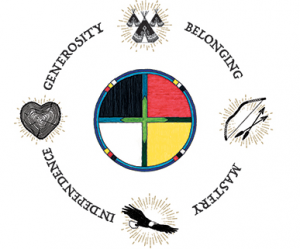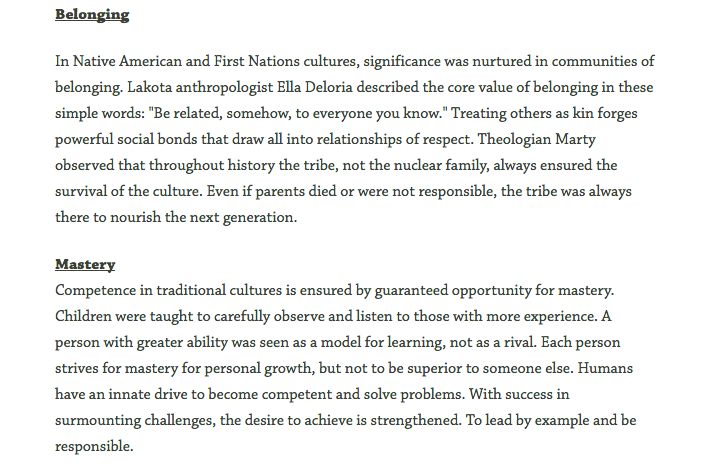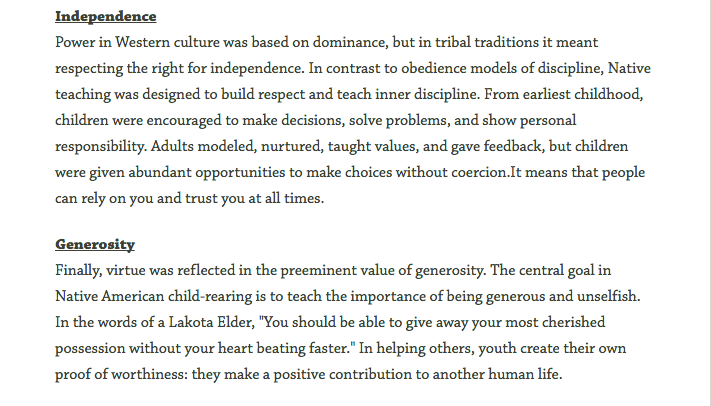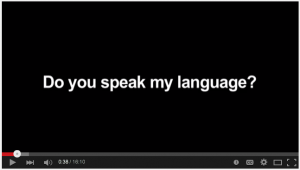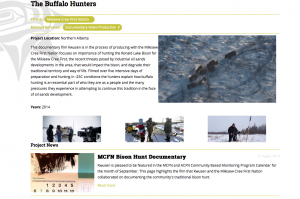This video was created by the students at Lakeview Elementary School in Quesnel, BC. The children at the school demonstrated the 4 components from the Circle of Courage (belonging, mastery, independence, and generosity) through the use of acting, animation and documentary. The focus of my group’s research paper is looking for educational benefits for the dominant society in addition to the Indigenous community. “Indigenous knowledge is not just for Indigenous peoples, but is a way of thinking holistically about the connections between the natural world and human consciousness” (Marker, 2017). This video demonstrates how a variety of students, both of Indigenous and non-Indigenous decent, used their knowledge of the four components of the Circle of Courage and create examples that they may encounter in their everyday life. The commentary in the video is not always fitting as some of them were laughing and what not, but overall the examples were well done. Lastly, the students utilized technology very well in this video. Lastly, the children in the video did a great job of using the Core Competencies (communication, thinking, and personal & social) from BC’s Redesigned Curriculum to apply what they are learning into a meaningful way.
This video made me realize the importance of Social Emotional Learning (SEL) in all communities, especially highly populated Indigenous communities. The Collaborative for Academic, Social, and Emotional Learning (CASEL) describes social and emotional learning (SEL) as, “The process through which children and adults acquire and effectively apply the knowledge, attitudes and skills necessary to understand and manage emotions, set and achieve positive goals, feel and show empathy for others, establish and maintain positive relationships, and make responsible decisions” (CASEL, 2017). SEL has become a framework for how educators, families, and community partners to promote students’ social, emotional and academic learning. According to Statistics Canada, Aboriginal children represent the fastest growing segment [on and off reserves] of Canada’s population (Statistics Canada, 2017); yet, they are the lowest ranking group in the country in terms of health status, as well as social, emotional, and economic well-being (National Association of Friendship Centres, 2017). Canada funds First Nations students wanting to attend high school off Reserve but doesn’t keep track of how many students receive that funding. First Nation’s students must make sacrifices when attending these schools, one being boarding with a stranger. It is extremely hard because they are so far away from their families; living with unknown people and going to school with a bunch of strangers – it doesn’t really feel like home. How can we provide a meaningful education, while meeting the social and emotional needs of these students? “It’s devastating to know that the kids that you’re sending out to get an education come back in a body bag” (Global News, 2016). Racism makes these children feel like an outsider when it comes to afterschool hours, “I mean you come out here and you’re different … you’re looked at differently” (Global News, 2016). The problem is that on some reserves, the primary schools are falling apart, with no high schools at all. When the kids finish Grade 8 they have a tough decision to make – stay here and not get a high school diploma or move away. The rates of unemployment are high, and so are the rates of poverty, addiction and suicide. The Canadian government need to provide the same level of child welfare services on reserves that exist elsewhere.
